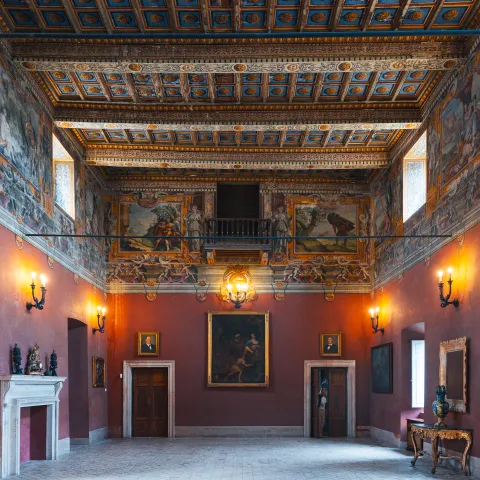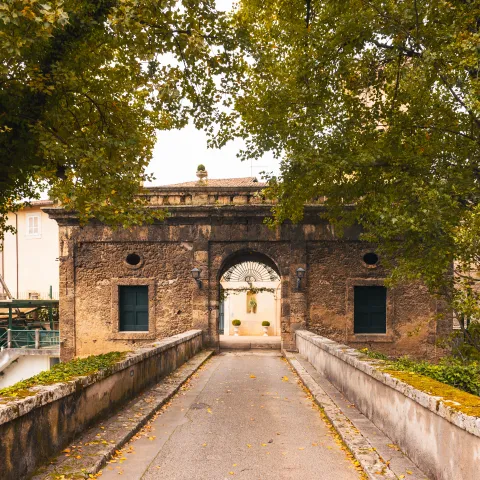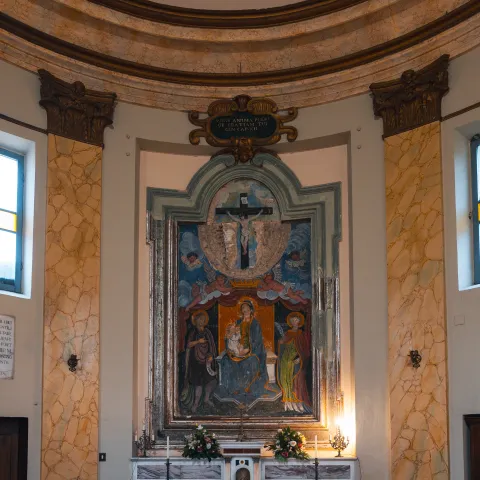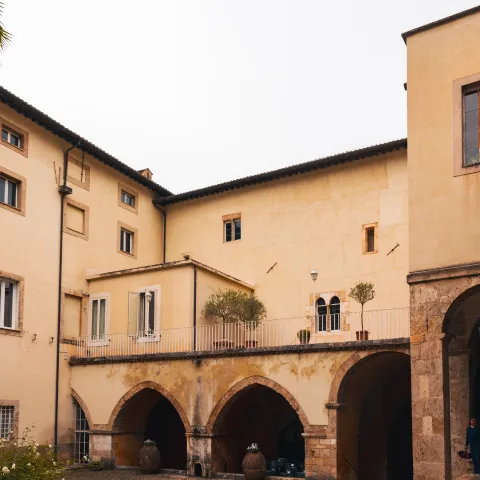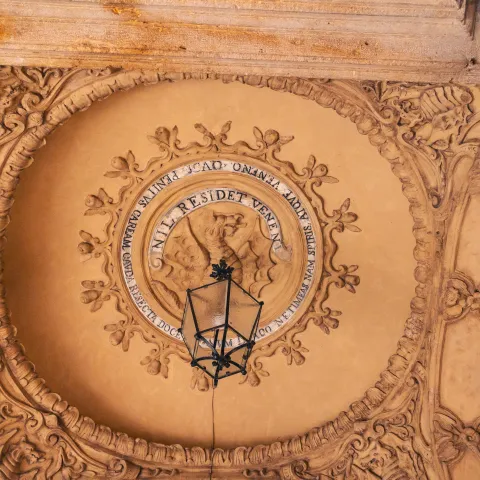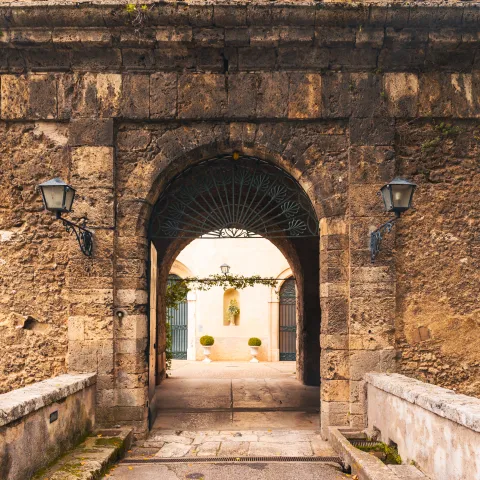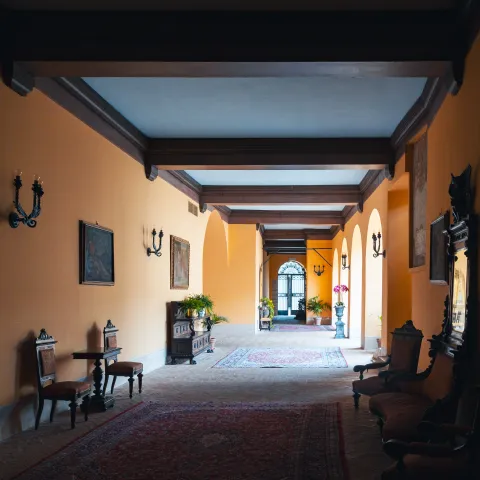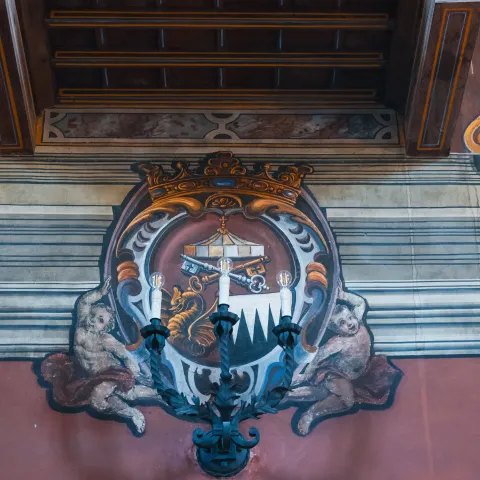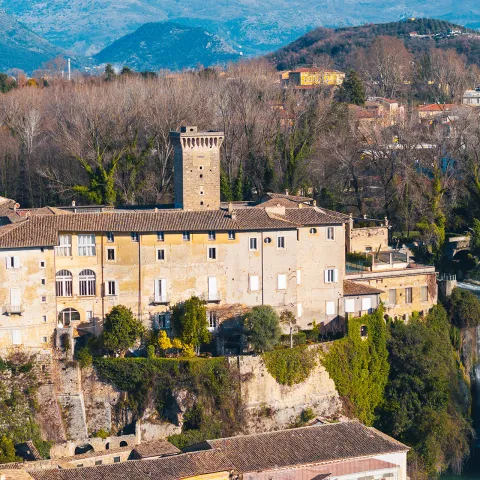Boncompagni Viscogliosi Castle
The Castle of Isola del Liri, officially recognized as a national monument today, is one of the most remarkable and best-preserved architectural complexes in the entire Province of Frosinone
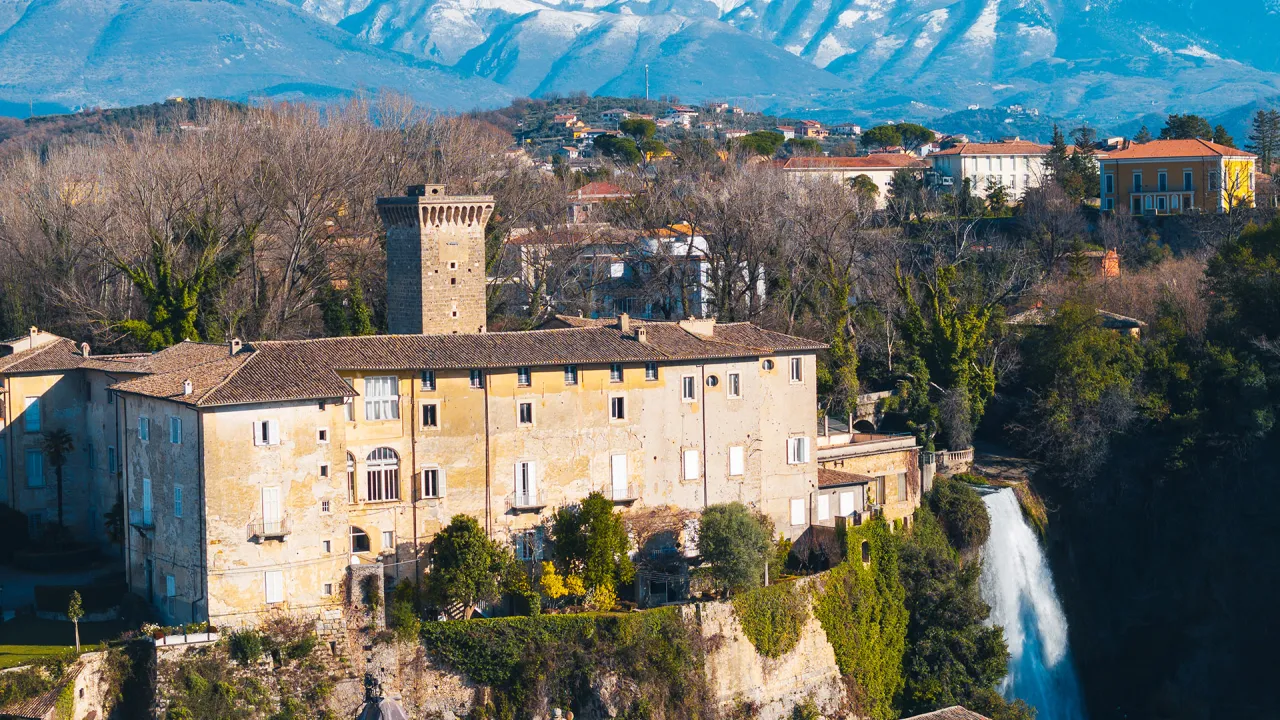
It stands on a travertine outcrop that blocks the flow of the Liri River, forcing the river to split into two branches and form the town's famous waterfalls: the more renowned Cascata Grande (or Vertical Waterfall) to the south, and the equally striking Cascata Piccola del Valcatoio to the west. Both waterfalls are 27 meters high and are unique in the world as they cascade directly into a built-up urban area.
The earliest records of the site date back to 1004, when the monks of Montecassino, having received it as a donation from a nobleman named Raniero, transformed it into a place of worship. In the following centuries, the castle served as a refuge for rural populations and their livestock during the raids by the Turks and Saracens.
During the 15th century, the town of Sora was first established as a county and later elevated to a duchy. The first Duke, Leonardo Della Rovere, permanently established his residence in the castle. In 1496, it passed to Giovanni Della Rovere, who turned it into a stronghold against the Aragonese forces in preparation for the reconquest of the Kingdom of Naples by Charles VIII, with the support of the local clergy. However, the conspiracy of the barons failed and Giovanni was the sole survivor. The Della Rovere family remained in the castle until 1579, when Pope Gregory XIII purchased the entire Duchy of Sora for his son, Giacomo Boncompagni, who was officially granted the title of Duke of Sora and Arce on 19 April 1580. After his father's death, Giacomo was ousted from the political offices he had held in Rome and chose the castle as his permanent residence. He retired to live there together with his wife, Costanza Sforza di Santa Fiora, who transformed the military structure into an aristocratic residence. They commissioned biblically inspired frescoes and bas-reliefs depicting the towns belonging to the Duchy of Sora, which can still be admired in the Salone delle Rondinelle and also oversaw the creation of the castle's park. Under Giacomo, the castle became the administrative and political center of the Duchy of Sora, effectively assuming the role of a royal palace. During the riots of 12 May 1799, the castle also suffered extensive damage and was subsequently given to concession to the industrialists Lambert and Mazzetti for industrial purposes. Later, in 1850, it was sold to Giuseppe Polsinelli, who adapted the castle for industrial use, transforming its splendid halls into rooms for weaving, spinning and dyeing wool.
In 1924, the now-abandoned castle was purchased by the engineer Angelo Viscogliosi, who had harnessed the flow of the Cascata Grande waterfall to generate electricity for the family paper mill, located less than a kilometer away. Today, the Viscogliosi family still lives in the castle, maintaining and restoring it. Alongside its residential function, the castle continues to serve an industrial purpose, as the Viscogliosi felt mill remains operational within its walls.
PHOTO GALLERY

VIDEO


